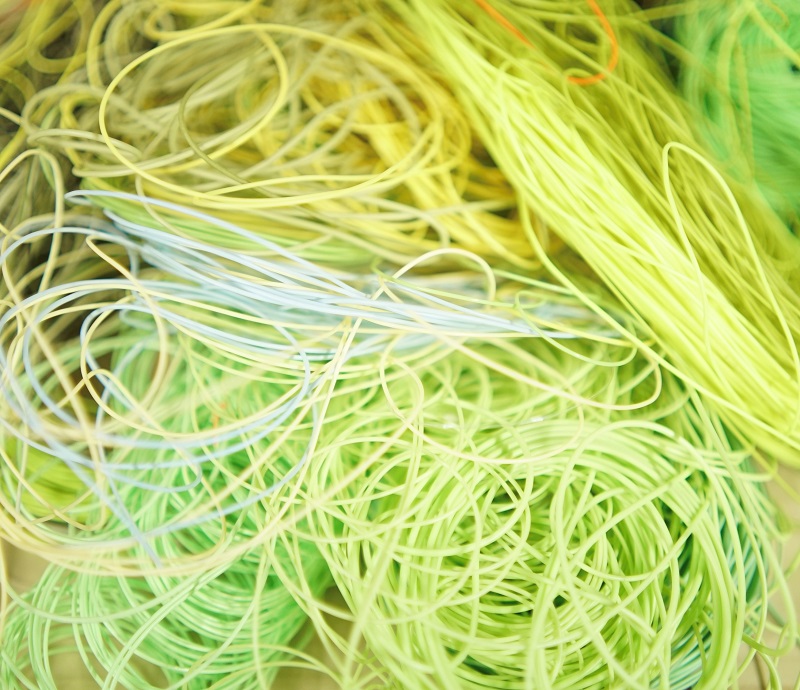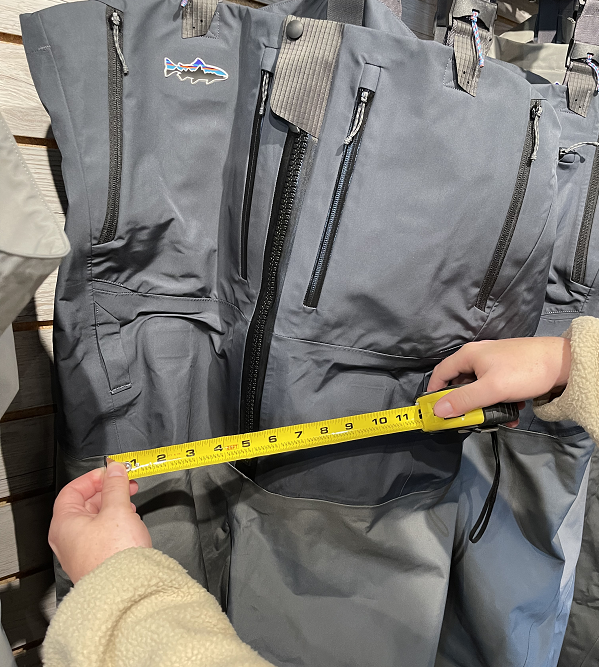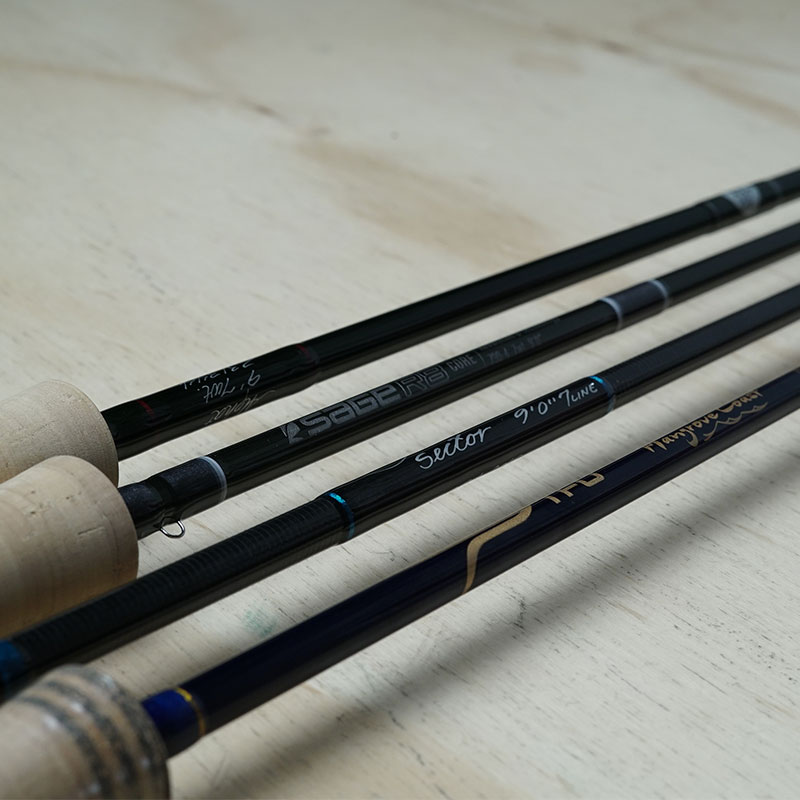
One of the most daunting things about starting new hobby is not knowing what pieces of gear are essential to your success. Our Pro Staff have assembled this non-exhaustive list with the hope of imparting some of our field knowledge onto fly fishing beginners. One thing to note is that while your fly fishing kit can take you pretty far, it is more to nail down fly fishing basics like casting, fishing techniques, and other Fly Fishing 101 before you can become a truly accomplished fly angler.
If you're a beginner feel free to think of this blog as a Fly Fishing Gear Checklist, as it contains what we believe to be the most important pieces of kit to have a fun and successful day on the water.
Rod
The most crucial piece of your fly fishing tools, the rod should be the first thing that you need to consider when getting into the sport. The weight and length of the rod you choose is largely dependent on what type of species you intend on targeting. Consider these recommendations just as a 'rule of thumb', what might be appropriate for your home waters is not going to be the same on the other side of the country even if you are targeting the same species. The best way to determine which weight and length of fly rod is appropiate for you is to reach out to your local shop or a fellow angler to understand your needs.
ReelFlyRod has put together a useful tool with our Shop by Species page which can help narrow down the wide range of options.
The standard issue rifle of the fly fishing world is the 9'0" 5wt rod. Lauded for its versatility, the 9'0" 5wt fly rod is perfectly at home throwing large flies to bass or subtly presenting diminutive dry flies to spooky trout.
As a general rule-of-thumb there are some standards among fly rods and their weights.
WEIGHT
- 1-4: SUNFISH AND SMALL TROUT, SMALL STREAMS
- 4-6: GENERAL TROUT, LARGER STREAMS AND RIVERS
- 6-8: BASS, CARP, LIGHT STEELHEAD, SALMON. AND SALTWATER
- 8-10: WINTER STEELHEAD, SALMON, AND SALTWATER
- 10-14: BIG GAME
Line
The line is the vehicle through which you will deliver your fly to unsuspecting fish. A high-quality fly line can make a low-end fly rod perform well but the opposite is just as true, pairing a high-end fly rod with a poor-quality fly line won't allow you to take advantage of the good characteristics of your rod. The most basic fly line that will improve your performance as a beginner is the weight-forward floating line, this is widely chosen for its ability to make the most out casters.
Reel
For anglers that are targeting trout and bass, although necessary, the fly reel is the least important piece of the rod, reel, and line trifecta. For species like trout, panfish, and bass, the fly reel really only acts as a line holder because you are rarely ever going to need a competent drag system. If you are saltwater angler or intend to target species like salmon or steelhead, there are some important characteristics which you wish to have in a fly reel, like a large arbor size, a closed drag, and a smooth drag system.
Tippet & Leaders
Classified as the 'terminal tackle', tippet and leaders are the attached to the end of your fly line to create a more disguised transition from your line to the fly.
Leaders gradually taper from a thick butt section to a fine end where the fly can be tied. As you replace you fly, you will lose sections of your leader. To build back up the length of your leader you will need Tippet. Tippet is a uniform diameter and is attached to the end of your leader from which new flies can be tied.
Net
One of the most important aspects of fly fishing is the preservation of fish and if you're practicing catch and release that the fish is released in a healthy state so that future anglers can enjoy catching them, too. The net keeps the protective slime coating of the fish intact which can prevent them from getting unnecessary abrasions and contracting debilitating infections. The best nets to protect the fish have a rubber mesh and if you want to take pictures of your catch remember to wet your hands before handling as this can also remove the slime coating.
Waders
While not necessary for all anglers, waders give you the ability to extend your fishing season into the colder months. The longer the time that you spend on the water the more you will begin to understand the nuances of fly fishing and the attention to detail it requires from the angler.
Boots
You may ask yourself "Why do I need a pair of wading boots?" and you may think that you can just get away with just wearing a pair of hiking boots. Wrong! Wading boots are specifically made for water, each boot features extra breathability and water draining capabilities which will make your wade much easier and
Fly Box and Flies
It goes without saying that you need flies to go fly fishing. As you learn more about the species of fish that you are targeting, the more you will also learn about the type of prey that they eat. On your journey to becoming an accomplished fly fisher, you will inadvertently become a biologist, an entomologist, and a naturalist.
You're gonna need a place to put all of your flies and that's where the fly box comes in. Most of these are super simple and if you grab a quality fly box it will last you a lifetime.
Streamside Tools
We've decided to create this as an umbrella term because many of the essential fly fishing tools can perform multiple functions. There are two tools which we have deemed essential in fly fishing: nippers and hemostats. These are the basics of fly fishing gear that you will need on the river.
Nippers are one of the more frequently used tools at your disposal. The purpose of the nipper is trimming tag ends off our leader and tippet when you tie on a new fly.
Consider adding a zinger to both your nippers and hemos as this makes them easily reachable and prevents them from accidentally falling into the water.
Sunglasses
This might seem like something inconsequential, but a good pair of sunglasses can make or break a successful fishing trip for you. High-quality polarized sunglasses can help your vision cut through the water which allows you to see fish, underwater features which are attractive places for fish to hide, and hidden obstacles which may snag your fly. A pair of polarized sunglasses is always in the essential fly fishing kit of our Pro Staff and they should be a staple in yours too.
In addition to the performance that a good pair of sunglasses can provide to you, the best benefit is actually the protection that they possess. When you're slinging around heavy flies with dumbbell eyes or lightweight flies at the mercy of the wind, the last thing you want to happen is to get hit in the eye or catch a sharp hook that has caught a nasty gust of wind. None of our Pro Staff ever leaves the shop without having a pair and it is always something we request of our customers who take advantage of our Guiding Services.
Featured Products
- Best Fly Fishing Rods
- Best Fly Reels
- Best Fly Fishing Lines
- Best Leaders and Tippet
- Fly Fishing Nets - ReelFlyRod
- Best Fly Fishing Waders
- Best Wading Boots
- Best Fly Boxes
- Best Wading Accessories
- Shop Sunglasses
If you have any questions about these fly rod combos or any of the other fly fishing products, please contact our expert Pro-Staff at 1-800-434-8472 or send us an email at [email protected]. You can also Book an Appointment to Shop With An Expert. Get outfitted virtually online, over the phone, or in-person at the fly shop.



